Welcome to our essential guide on transforming your kitchen into a pinnacle of efficiency and style. This article is your blueprint for mastering kitchen organization, offering expert tips to declutter, optimize storage, and streamline your cooking space.
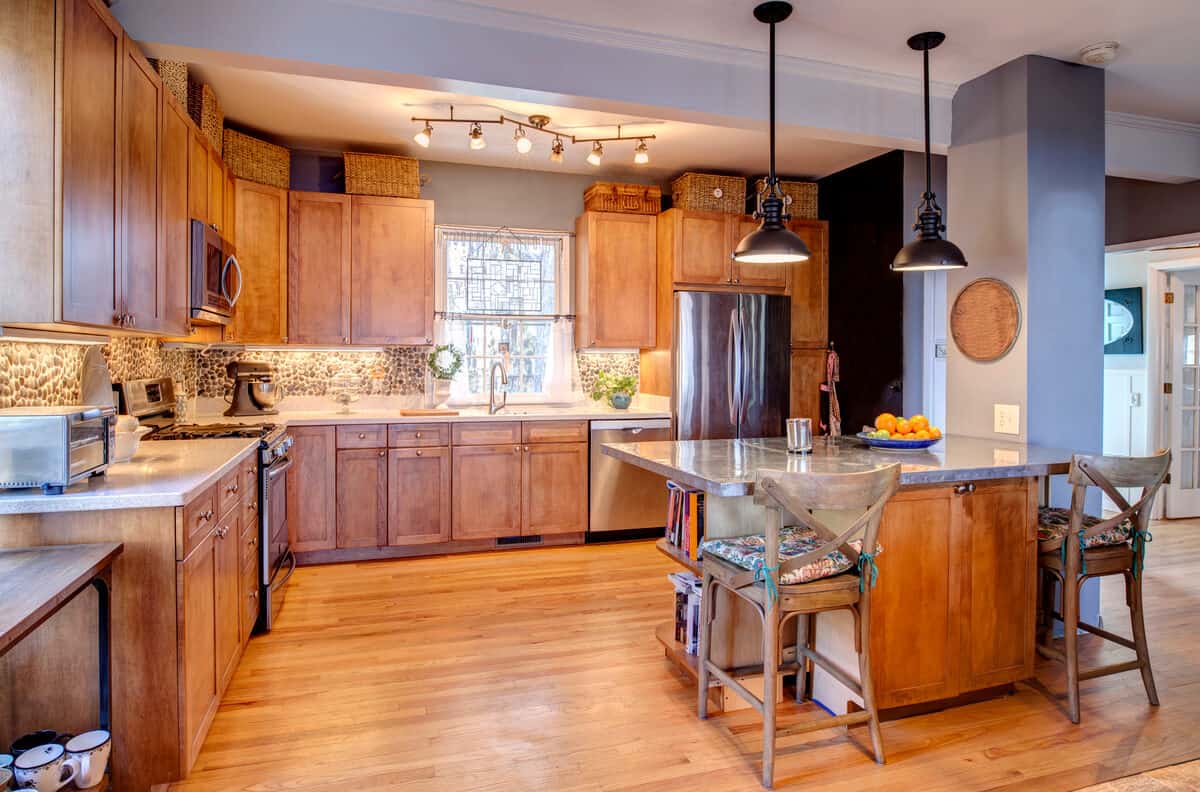
Whether you're a culinary enthusiast or simply aiming to enhance your kitchen's functionality, our strategies are tailored to elevate your home's heart. Let's embark on a journey to create a kitchen that inspires every meal and gathers everyone together.
How to organize your kitchen cabinets?
Organizing your kitchen cabinets efficiently can make your kitchen more functional and your cooking process smoother. Here are some steps and tips to help you organize your kitchen cabinets:
- Empty Cabinets and Declutter: Start by emptying your cabinets. This gives you a chance to sort through your items, declutter, and decide what you want to keep, donate, or throw away. Keep only the items you use regularly.
- Clean Your Cabinets: Once empty, take the opportunity to clean the cabinets thoroughly. Wipe down all surfaces with a mild cleaner or soap and water.
- Group Like Items Together: Organize your items into categories. Keep dishes with dishes, glasses with glasses, and so forth. This also applies to food items; group spices, baking ingredients, and canned goods together.
- Use Organizers: Investing in shelf organizers, spice racks, and storage bins can help maximize space and keep items more accessible. Drawer dividers can also help keep utensils and small kitchen gadgets organized.
- Consider Usage Frequency: Place items you use frequently at eye level or in easy-to-reach places. Less frequently used items can be stored higher up or in less accessible cabinets.
- Stack Vertically: Use vertical space wisely. Stackable shelves can help you use the full height of your cabinets more efficiently. This is especially useful for plates, bowls, and other similar items.
- Utilize Door Space: If possible, use the inside of cabinet doors for additional storage. You can install hooks for measuring cups and spoons or add narrow racks for spices and small jars.
- Label Where Necessary: For food storage containers or bins, labels can be very helpful. This is especially true for items that are not immediately visible or for grouping similar items together, like baking ingredients.
- Keep a Consistent System: Once you have a system in place, try to keep it consistent. This will make it easier for everyone in your household to find what they need and put things back where they belong.
- Review and Adjust Regularly: Your needs and the items you use may change over time. Periodically reviewing and adjusting your organization system can help keep your kitchen functional and efficient.
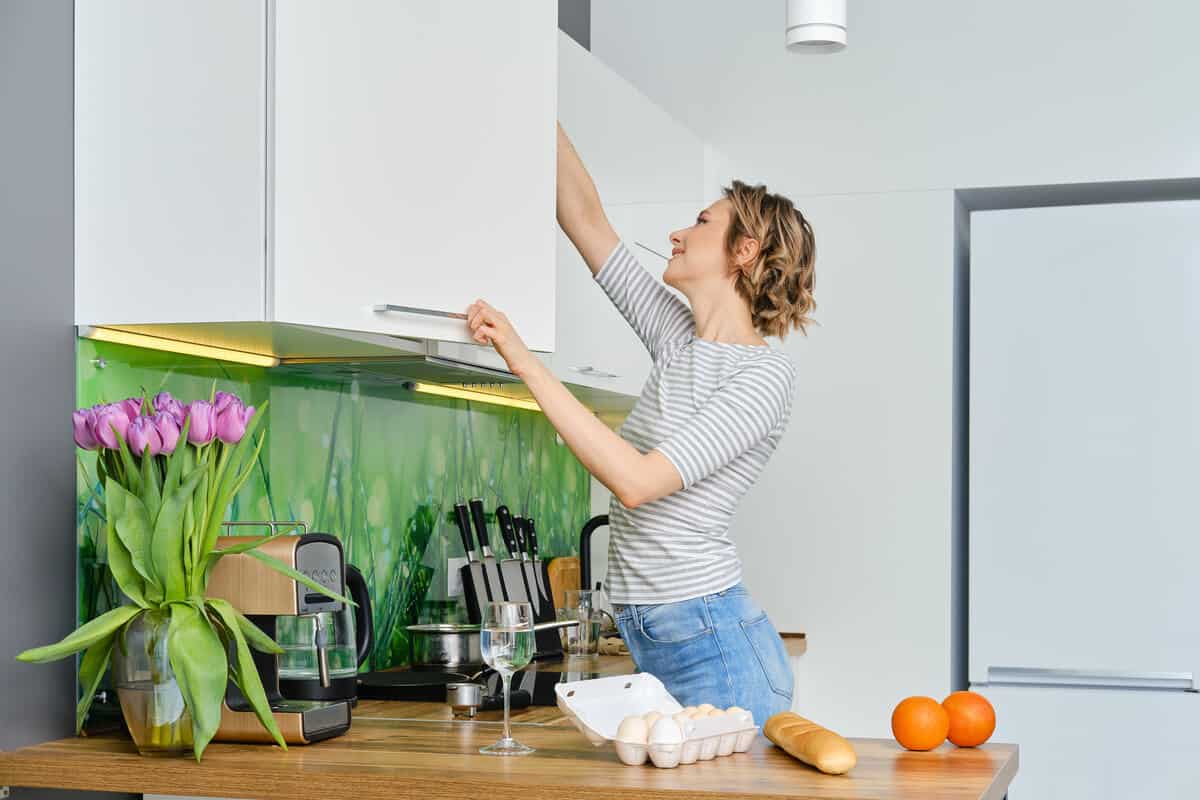
Remember, the key to organizing your kitchen cabinets is creating a system that works for you and your household. It might take some trial and error to find the perfect arrangement, but the effort will pay off in the long run by making your kitchen more enjoyable and easier to use.
The Ultimate Guide to Closet Organization: Practical Tips for Modern Homes
By exploring 'The Ultimate Guide to Closet Organization: Practical Tips for Modern Homes,' you'll discover essential techniques and innovative strategies to transform any closet into an optimized, visually appealing space. This guide isn't just about organization—it's about elevating your home life through mindful arrangement and design, reflecting your unique style and modern living needs.

The Ultimate Guide to Closet Organization: Practical Tips for Modern Homes
By exploring 'The Ultimate Guide to Closet Organization: Practical Tips for Modern Homes,' you'll discover essential techniques and innovative strategies to transform any closet into an optimized, visually appealing space. This guide isn't just about organization—it's about elevating your home life through mindful arrangement and design, reflecting your unique style and modern living needs.
How to organize kitchen drawers?
Organizing kitchen drawers effectively can greatly enhance your kitchen's functionality and efficiency. Here's a step-by-step guide to help you get your kitchen drawers in order:
- Empty the Drawers: Begin by emptying all your drawers. This will give you a clear overview of the items you have and allow you to clean the drawers thoroughly.
- Clean the Drawers: Once emptied, clean the drawers with a damp cloth and mild detergent. Let them dry completely before you start reorganizing.
- Declutter: As you empty the drawers, take the opportunity to declutter. Discard or donate items that are broken, duplicates, or rarely used. Keeping only the essentials will make it easier to organize and find what you need.
- Categorize Your Items: Group similar items together. For example, keep all your cooking utensils in one category, cutlery in another, and measuring cups and spoons in a separate group. This categorization will help you decide how to organize your drawers based on what items they will contain.
- Use Drawer Organizers or Dividers: Invest in adjustable drawer organizers or dividers. These tools are invaluable for keeping your items neatly separated and easily accessible. Choose organizers that fit your drawers and the items you need to store.
- Designate Drawers for Specific Purposes: Assign each drawer a specific purpose based on the items' frequency of use and the drawer's location. For instance, keep cutlery and everyday utensils in drawers closest to the dishwasher or sink for easy unloading and access, while baking tools or less frequently used gadgets can be stored further away.
- Optimize Space with Containers and Bins: For smaller items or to keep things like spice packets, tea bags, or kitchen gadgets organized, use small containers or bins within the drawers. This can prevent items from getting jumbled together.
- Label Sections: If it helps you stay organized, consider labeling sections within the drawers, especially in larger drawers where multiple categories of items are stored. This is particularly useful in drawers used for storing a variety of tools or gadgets.
- Maintain a Logical Arrangement: Place items in a way that makes sense for how you use your kitchen. For example, keep cooking utensils near the stove and baking tools together in a drawer near where you typically prepare dough or batter.
- Regular Review and Reorganization: Over time, your kitchen needs and inventory may change. Periodically review the organization of your drawers to ensure they still meet your needs. Adjust as necessary to maintain efficiency and ease of use.
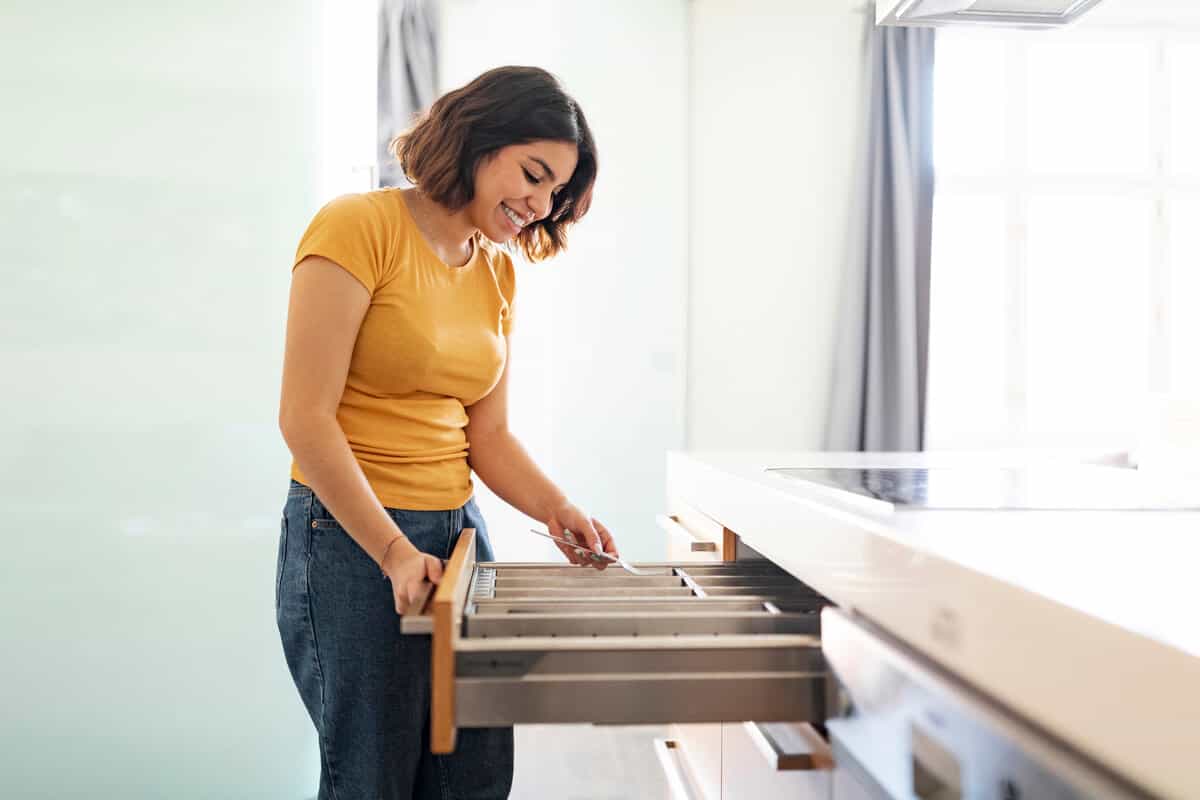
By following these steps, you can create a more organized and efficient kitchen that makes cooking and meal preparation easier and more enjoyable. Remember, the goal is to create a system that works for you and your household's specific needs.
How to organize kitchen counter?
Organizing your kitchen counter effectively can not only enhance the overall look of your kitchen but also improve its functionality, making cooking and meal preparation easier. Here are some steps and tips to help you organize your kitchen counter:
- Declutter Your Counters: Start by removing everything from your kitchen counters. This gives you a clean slate to work with and allows you to decide what truly needs to be on the counter.
- Prioritize Essentials: Only keep items that you use daily or very frequently on the counters. This might include the coffee maker, toaster, a knife block, or a drying rack for dishes. If you don’t use it every day, consider storing it elsewhere.
- Use Vertical Space: To maximize counter space, use vertical storage solutions. This can include hanging utensil holders, spice racks, or shelves above the counter. Magnetic knife strips can also save space and keep knives accessible and organized.
- Organize in Zones: Create specific zones on your counter for different activities. For example, have a coffee station with your coffee maker, mugs, and coffee grounds; a cooking zone near the stove with oils, spices, and utensils; and a preparation zone with cutting boards and knives.
- Use Tray and Baskets: Group smaller items together on trays or in baskets to reduce clutter. This not only keeps similar items together but also makes it easier to clear the counter when you need more space.
- Opt for Multipurpose Appliances: If possible, invest in appliances that serve multiple functions to reduce the number of items you need on your counter. For example, an oven that can also microwave or a blender that comes with food processing attachments.
- Implement Appliance Garages or Cabinets: If space allows, use an appliance garage (a countertop cabinet) to store small appliances. This keeps them accessible but out of sight, reducing visual clutter.
- Keep Decor Minimal: While it’s nice to have decorative items, they can take up valuable space. Opt for functional decor, like a vase that can hold cooking utensils or a small pot of herbs that you can use in cooking.
- Regular Cleaning and Maintenance: Make it a habit to clean your counters regularly. A clear counter is more inviting and easier to use. This also encourages you to keep it clutter-free.
- Adjust Based on Your Needs: Your kitchen needs may change over time, so be flexible and adjust your organization strategy as needed. Periodically reassess what you have on your counter and make changes if necessary.
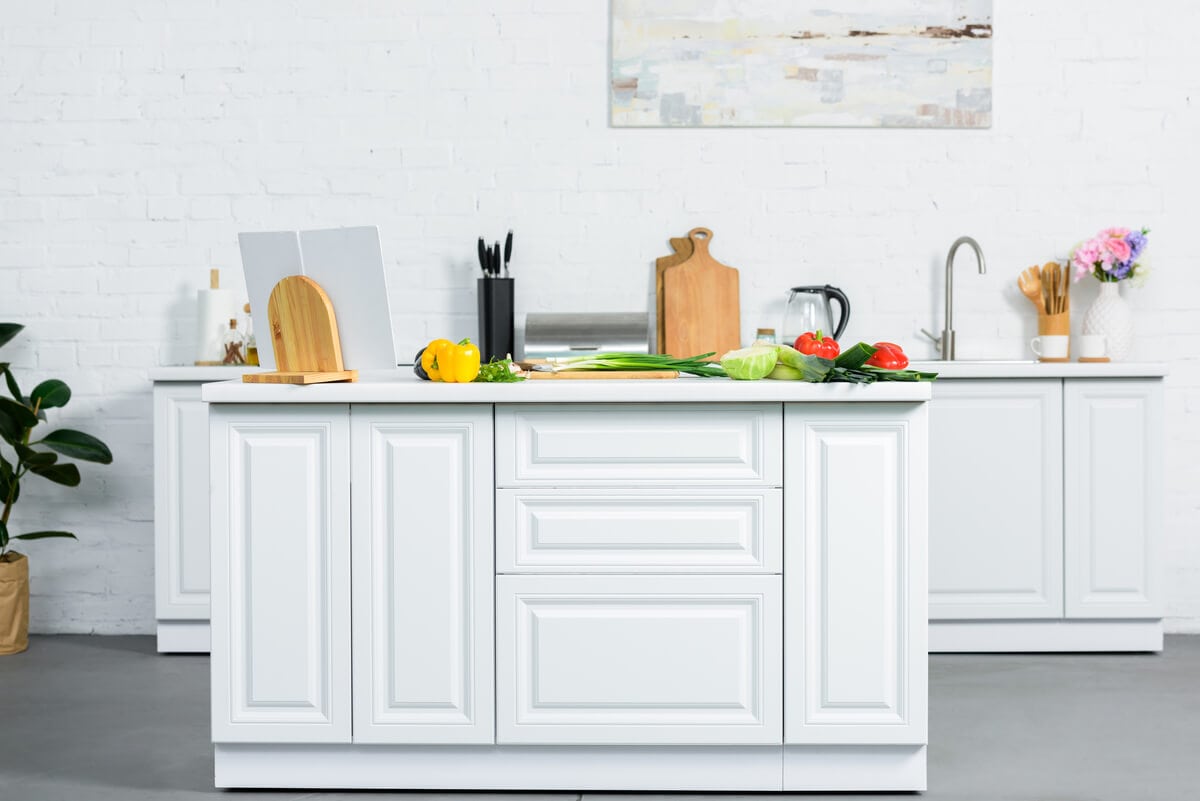
By keeping your kitchen counters organized, you not only make your kitchen more visually appealing but also create a more efficient and enjoyable cooking environment. Remember, the goal is to create a space that works well for your lifestyle and cooking habits.
How to organize under kitchen sink?
Organizing the space under your kitchen sink can transform an often cluttered and overlooked area into a functional storage space. Due to the plumbing fixtures, this area can be a bit tricky to organize, but with the right approach, you can maximize its utility. Here’s how to do it:
- Empty and Clean: Begin by removing everything from under the sink. This gives you a chance to sort through your items and decide what to keep, donate, or throw away. Clean the area thoroughly to start fresh.
- Assess the Space: Take note of the available space, including any obstacles like pipes or garbage disposal units. Measure the dimensions to know what storage solutions will fit.
- Sort Your Items: Group similar items together. This might include cleaning supplies, dishwashing detergents, trash bags, and other kitchen essentials. Discard any expired or unnecessary items to free up space.
- Use Adjustable Organizers: Invest in adjustable shelves or organizers that can fit around plumbing. These can help you make the most of the vertical space and keep things accessible.
- Install a Tension Rod: A simple tension rod can be installed horizontally to hang spray bottles by their triggers, freeing up valuable shelf space for other items.
- Opt for Clear Storage Bins: Use clear, waterproof bins or baskets to group items together. This not only helps in keeping things organized but also makes it easier to pull out what you need without having to rummage around.
- Label Everything: Labeling bins and shelves makes it easier to find what you need and maintain organization. It also helps other members of your household know where things belong.
- Utilize Door Space: If possible, add over-the-door organizers or racks to the cabinet doors for extra storage. This is a great place to store smaller items, like dishwasher pods, sponges, and gloves.
- Keep Frequently Used Items Accessible: Place items you use regularly, such as dish soap and sponges, at the front for easy access. Store less frequently used items, like special cleaning solutions, towards the back.
- Maintain a Clutter-Free Zone: Regularly go through the items under your sink to remove anything that doesn’t belong or has become unnecessary. Keeping this area clutter-free will make it easier to find what you need and prevent items from becoming lost or forgotten.
- Consider a Leak Protection Mat: Place a waterproof mat or liner on the bottom of the cabinet to protect against leaks or spills. This makes cleanup easier and protects your cabinetry.
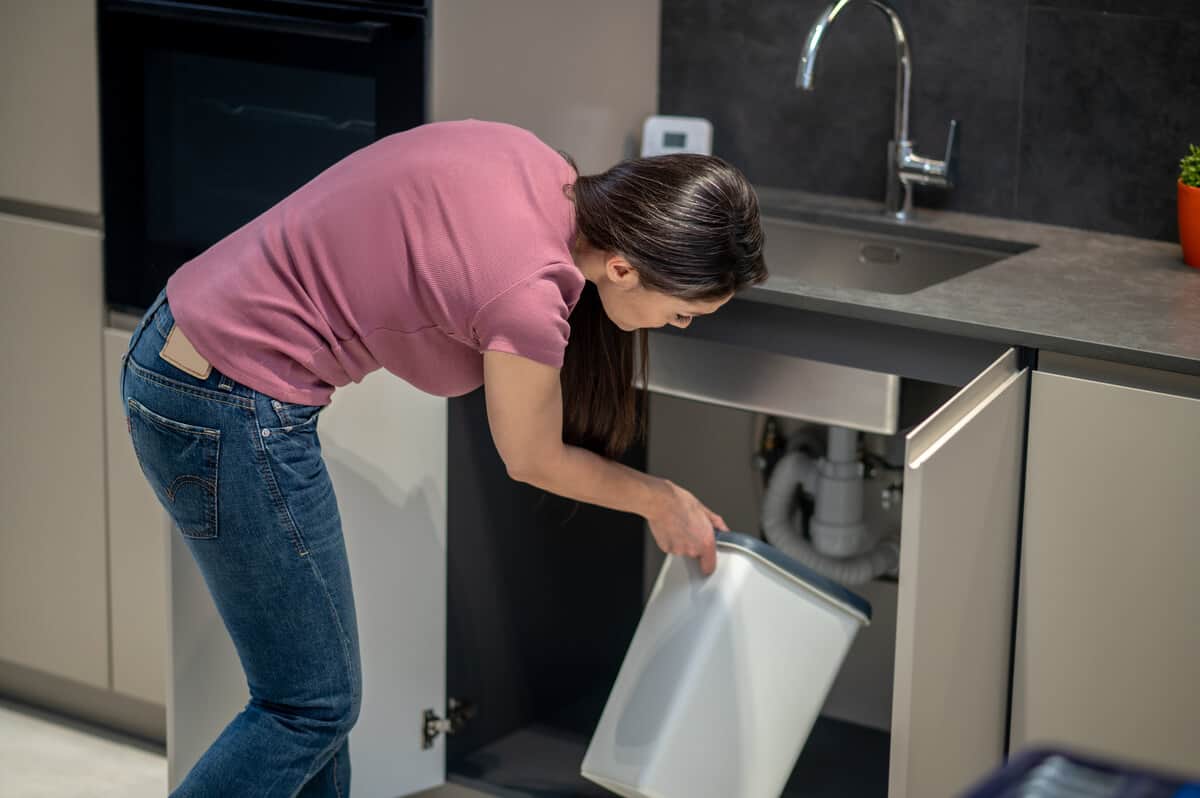
By following these steps, you can create a well-organized and functional storage space under your kitchen sink. An organized under-sink area not only saves time when you’re looking for something but also maximizes the use of space in your kitchen.
How to organize a kitchen for efficiency?
Organizing a kitchen for efficiency involves strategic planning of your space to enhance workflow, minimize clutter, and make cooking and cleaning as straightforward as possible. Here are some key steps and principles to consider for creating a highly functional kitchen:
1. Follow the Kitchen Work Triangle Principle
- The work triangle concept is designed to minimize effort and walking distance between the sink, refrigerator, and stove. Ideally, each leg of the triangle should be between 4 and 9 feet, and the total of all three legs should be between 13 and 26 feet. Adjust your layout as much as possible to adhere to this principle.
2. Zone Your Kitchen
- Preparation Zone: Keep cutting boards, knives, mixing bowls, and measuring cups/spoons near your primary prep area.
- Cooking Zone: Store pots, pans, spatulas, and cooking utensils near the stove and oven. Spices and oils should also be within easy reach.
- Cleaning Zone: Keep dish soap, sponges, and cleaning supplies near the sink. Make sure the dishwasher is accessible without blocking access to the sink or stove when open.
- Storage Zone: Organize your pantry items by category (e.g., baking supplies, canned goods, snacks). Use clear containers for bulk items to save space and keep things visible.
- Consumables Zone: Designate an area for everyday dishes, glasses, and silverware that’s easily accessible from both the kitchen and dining area.
3. Utilize Vertical Space
Install shelves or hanging racks to store items upwards rather than outward. Magnetic knife strips, hanging pot racks, or wall-mounted spice racks can free up valuable cabinet and counter space.
4. Implement Drawer Organizers
Use drawer dividers for utensils, spices, or junk drawers to keep items sorted and easy to find. Consider custom inserts for larger drawers to organize pots, pans, and lids.
5. Use Clear Containers for Pantry Storage
Transfer pantry goods into clear, airtight containers. This not only keeps food fresh but also allows you to quickly see what you have on hand, saving time and preventing waste.
6. Optimize Cabinet Storage
Use shelf risers, turntables (lazy Susans), and under-shelf baskets to maximize cabinet space. Group items by use or type to keep them organized and accessible.
7. Declutter Regularly
Regularly go through your kitchen items to get rid of duplicates, items that are rarely used, or things that no longer work. A minimalist approach can significantly improve efficiency.
8. Label Everything
Labeling shelves, bins, and containers helps everyone in the household know where things go, making it easier to find items and put them away correctly.
9. Keep Counters Clear
Minimize the number of items kept permanently on countertops to free up workspace. Store appliances you don’t use daily.
10. Adapt and Adjust
As you use your kitchen, you might find some arrangements work better than others. Be open to adjusting your organization to fit your changing needs and habits.
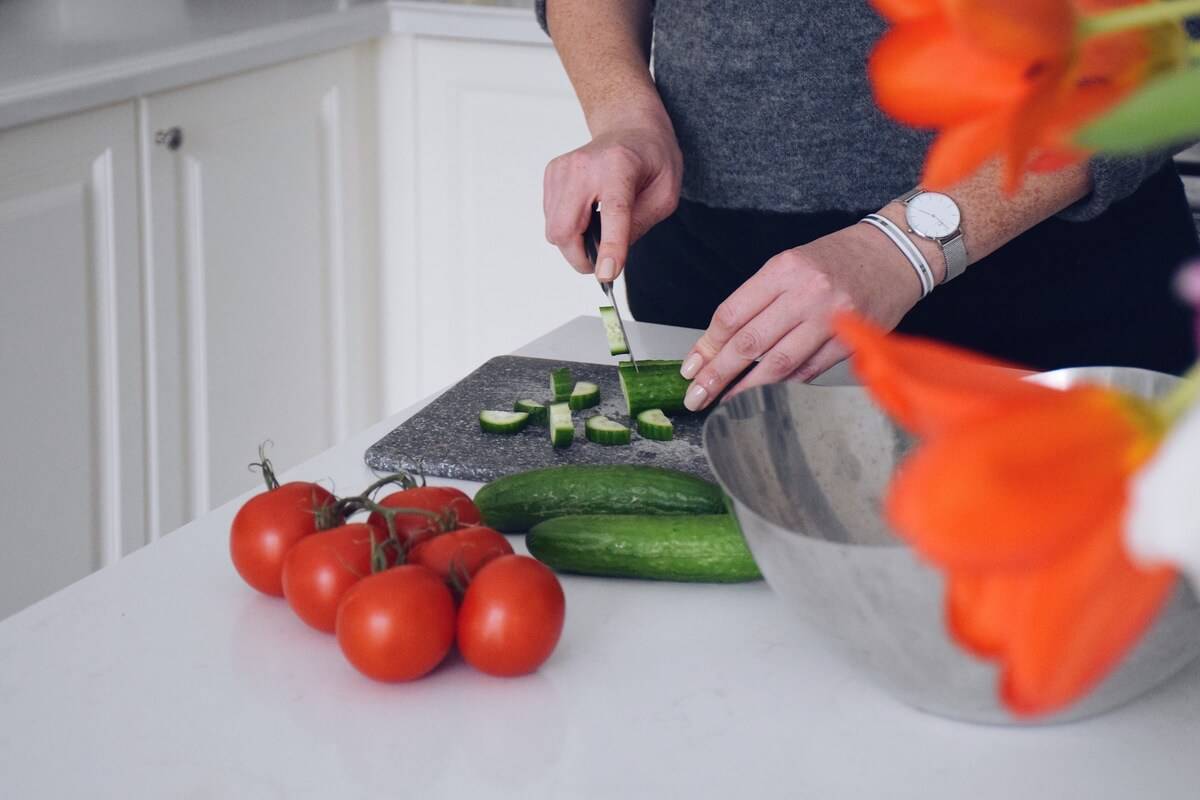
By carefully considering each aspect of your kitchen’s layout and organization based on your personal cooking and living habits, you can significantly enhance the efficiency and enjoyment of your kitchen space.

Download Our Brochure
Discover the art of organized living with TRU Home Pros. Our brochure is your first step towards a clutter-free, beautifully organized home. Inside, you'll find an array of bespoke solutions tailored to your unique needs, from elegant custom closets to robust garage systems.


Download Our Brochure
Discover the art of organized living with TRU Home Pros. Our brochure is your first step towards a clutter-free, beautifully organized home. Inside, you'll find an array of bespoke solutions tailored to your unique needs, from elegant custom closets to robust garage systems.
How to organize kitchen utensils?
Organizing kitchen utensils efficiently can make cooking and meal preparation more streamlined and enjoyable. Here's how to tackle this task effectively:
1. Sort Your Utensils
- Categorize: Begin by sorting your utensils into categories, such as cooking utensils (spatulas, wooden spoons), serving utensils (ladles, salad tongs), and preparation utensils (peelers, graters).
- Declutter: Get rid of any utensils that are duplicates, damaged, or rarely used. If you haven't used something in the past year, consider donating it if it's still in good condition.
2. Use Drawer Organizers
Drawer dividers or organizers can keep your utensils neatly separated and easy to find. Adjustable dividers are particularly useful as they can be tailored to fit your drawers and utensils sizes.
3. Separate by Frequency of Use
Keep frequently used utensils within easy reach, ideally in a drawer closest to where you prep and cook. Less frequently used items can be stored in higher cabinets or in less accessible drawers.
4. Implement Utensil Holders
For utensils you use regularly, consider using a countertop utensil holder near your stove. This can provide easy access while cooking. Choose a holder with compartments or enough space to separate utensils for even quicker access.
5. Utilize Wall Space
Wall-mounted racks, magnetic strips, or pegboards can be excellent for hanging utensils, freeing up drawer and counter space. This solution works well for small kitchens with limited storage.
6. Maximize Cabinet Storage
Use hooks or small adhesive holders inside cabinet doors to hang measuring cups, spoons, or other small utensils. This keeps them out of sight but organized and easy to access.
7. Store Utensils Near Their Point of Use
Organize your kitchen so that utensils are stored near where they are most frequently used. For example, keep cooking utensils near the stove and baking utensils with baking supplies.
8. Label Sections
Consider labeling sections within your drawers or on your storage solutions. Labels can help household members know where to find and return utensils, maintaining the organization system.
9. Regular Maintenance
Periodically go through your utensils to reassess what you have and whether the current organization system is working. Adjust as needed based on new utensils acquired or changes in your cooking habits.
10. Creative Storage Solutions
Don't be afraid to think outside the box with storage solutions. Items not specifically designed for kitchen storage, such as office organizers or plant pots, can be repurposed to hold utensils effectively.
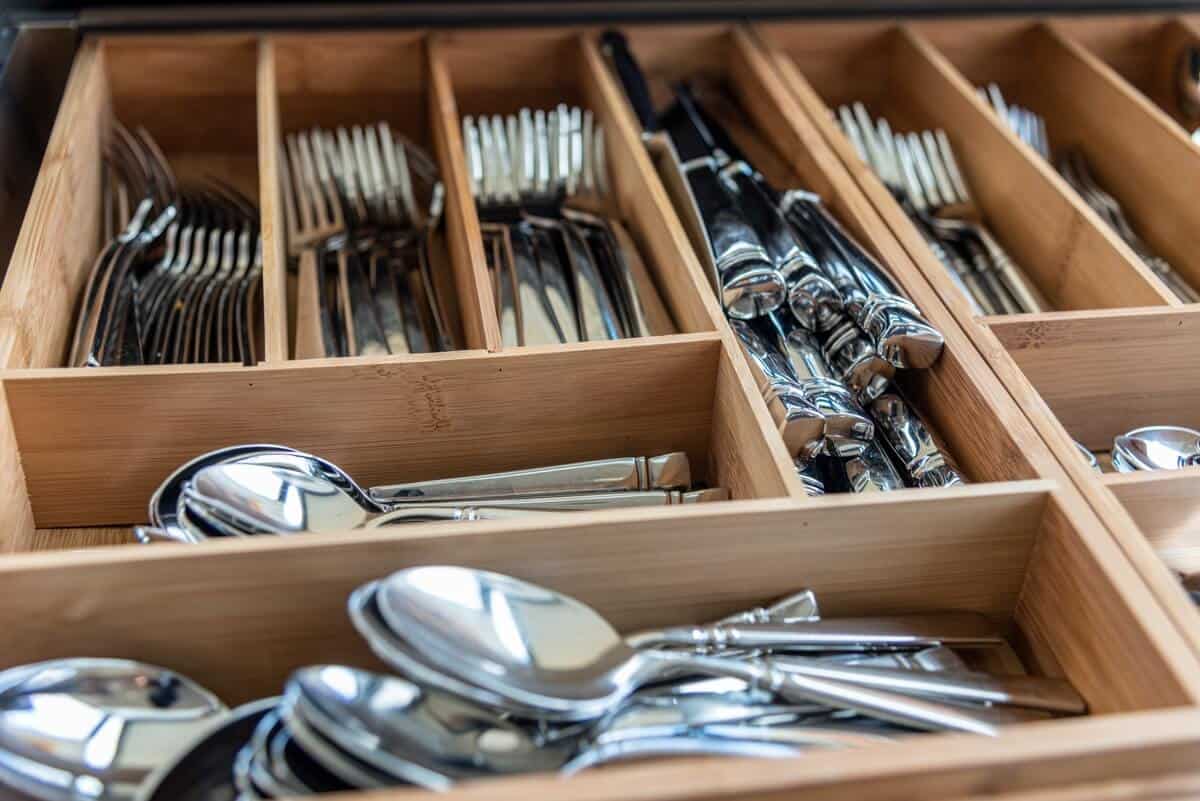
By organizing your kitchen utensils thoughtfully, you'll not only save time during meal prep but also enjoy a more orderly and functional kitchen space. Remember, the best organization system is one that suits your cooking style and kitchen layout, so feel free to adapt these suggestions to fit your needs.
How to organize pots and pans in kitchen cabinets?
Organizing pots and pans efficiently in your kitchen cabinets can make cooking more enjoyable and streamline your meal prep process. Here are several strategies to help you manage your cookware:
1. Declutter and Prioritize
- Start by removing all pots, pans, and lids from your cabinets to take stock of what you have.
- Declutter by donating or recycling items that are damaged, duplicates, or rarely used.
- Keep only the cookware that you use regularly and fits your cooking needs.
2. Sort by Type and Frequency of Use
- Group your pots and pans by type (e.g., skillets, saucepans, stockpots) and usage frequency.
- Store the items you use most often in the most accessible places, typically in the lower cabinets near your stove or cooking area.
3. Use Cabinet Organizers
- Vertical Organizers: Use these for storing baking sheets, cutting boards, and pan lids vertically, making them easier to access.
- Pull-out Organizers: Install pull-out cabinet organizers if possible, as they allow you to easily reach items stored in the back.
- Pot Racks and Hooks: Consider installing a hanging pot rack above your kitchen island or using wall-mounted hooks if cabinet space is limited.
- Lid Organizers: Use lid organizers or racks to keep lids separate from pots and pans, preventing clutter. These can be placed inside a cabinet door or in a cabinet.
4. Nest Pots and Pans
Nest smaller pots and pans within larger ones to save space. Place a layer of protective cloth or paper towels between them to prevent scratching.
5. Separate Lids and Pots
Store lids separately from pots and pans to maximize space. Use a lid organizer, a magazine rack, or a tension rod across the cabinet to organize lids by size.
6. Utilize Wall or Ceiling Space
If cabinet space is limited, consider using a wall-mounted rack or a ceiling pot rack to hang your most-used pots and pans. This solution keeps them accessible while saving cabinet space.
7. Use Drawer Dividers for Smaller Items
For deeper drawers, use dividers to organize smaller pots, pans, or accessories. This keeps them organized and easy to pull out.
8. Label Shelves
Labeling shelves or sections within your cabinets can help you and others in your household maintain the organization system.
9. Adjust Shelves to Fit Your Cookware
If your cabinets have adjustable shelves, rearrange them to accommodate the height of your cookware, maximizing vertical space.
10. Regularly Reassess Your Organization System
Over time, your cookware collection and cooking habits might change. Periodically reassess how your pots and pans are organized to ensure the system still works for you.

By implementing these strategies, you can create a more organized and functional kitchen that makes cooking and cleaning up afterward a much smoother process. Remember, the goal is to create a system that suits your cooking habits and kitchen layout, making it easy to find and store your cookware.
How to organize kitchen appliances?
Organizing kitchen appliances efficiently is crucial for maintaining a functional and clutter-free kitchen. Here's a step-by-step guide to help you manage your appliances, from the frequently used to the rarely touched:
1. Assess Your Appliances
- Start by taking inventory of all your kitchen appliances, big and small.
- Determine which appliances you use daily, which ones you use occasionally, and which ones are rarely used.
2. Declutter Your Appliance Collection
- Get rid of appliances that are broken, outdated, or no longer needed. If you have duplicates or appliances you haven’t used in over a year, consider donating or selling them.
- This step helps free up valuable space and makes the organization process easier.
3. Prioritize Counter Space
- Reserve your counter space for appliances you use daily or almost daily. This might include the coffee maker, toaster, or blender.
- Keeping counters clutter-free is key to a functional kitchen, so be selective about what stays out.
4. Use Cabinets for Less Frequently Used Appliances
- Store appliances you use weekly or monthly in accessible cabinets. These should be easy to reach but out of the way to keep your counters clear.
- Consider the weight and size of the appliance when deciding on a storage spot. Heavier items should be stored in lower cabinets.
5. Store Rarely Used Appliances Elsewhere
- Appliances that are used only a few times a year can be stored in harder-to-reach cabinets, in the pantry, or even in a storage closet outside the kitchen.
- Make sure these appliances are clean and possibly stored in their original boxes or with a protective cover to keep them dust-free.
6. Organize Appliances by Type or Function
- Group appliances by their function (e.g., baking, meal prep, coffee making) to make it easier to find what you need for a specific task.
- This can also help streamline your cooking and meal preparation process.
7. Use Appliance Garages or Pull-out Shelves
- If you have appliance garages (cabinets designed to store appliances) or pull-out shelves, use them to keep frequently used appliances accessible but out of sight.
- This helps maintain a clean and clutter-free countertop while keeping appliances handy.
8. Implement Vertical Storage
- For small appliances and accessories, consider using vertical storage solutions like stackable shelves or racks inside cabinets.
- Vertical storage can maximize cabinet space and make it easier to grab what you need.
9. Label Storage Areas
- Consider labeling shelves or cabinets where appliances are stored. This can help everyone in your household know where to find and return appliances.
- Labels are especially helpful in shared or family kitchens to maintain organization.
10. Regularly Review and Adjust Your Organization
- Your appliance needs may change over time, so it’s a good idea to periodically reassess your kitchen organization.
- Make adjustments as needed, whether it’s moving an appliance to a more accessible location or decluttering items that are no longer used.
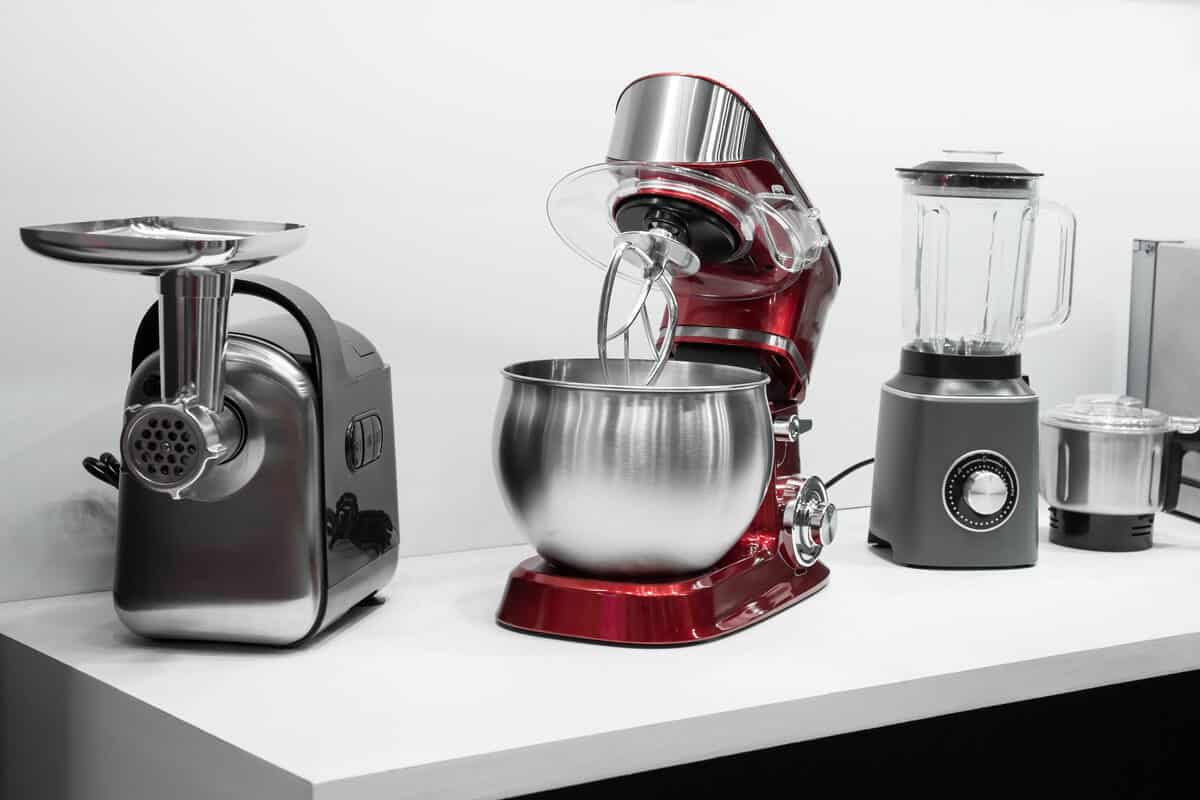
By following these steps, you can create a well-organized kitchen that makes cooking and meal prep more efficient. Remember, the key to effective organization is maintaining a system that works for your lifestyle and kitchen space.
In conclusion, organizing your kitchen—from the cabinets and drawers to the countertops and appliances—can significantly enhance your cooking experience, making it more enjoyable and efficient. Whether you're tackling a full kitchen overhaul or simply looking to make minor adjustments, these expert tips are designed to help you create a space that's both functional and inviting. Ready to transform your kitchen into the heart of your home? For more insights, innovative solutions, and to take the first step towards your dream kitchen, we invite you to download our brochure.
